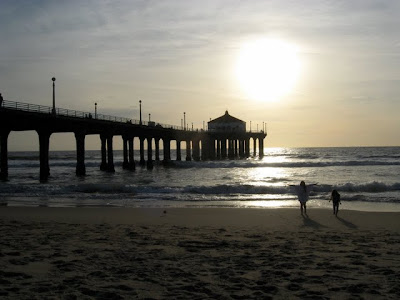
Every day is the Day of the Dead and Halloween for Cathee Shultz and J.D. Healy.
For more than 18 years the couple have collected the possessions of serial killers, the mummified heads of decapitated mass murderers and such things as photos of celebrity crime and autopsy scenes.
Portions of their collection have been on display at their Museum of Death in Hollywood since the first of the year.
"It's extremely graphic. Take a look at the picture behind you. It's our test photo," Shultz tells a visitor who is about to plunk down the $15 museum admission fee.
If the photograph of the victim of a crash between a motorcycle and a truck doesn't leave you weak-kneed or nauseated, you're good to go through the bars of a cell door from San Quentin State Prison's death row into the exhibit area, she says.
Past an alcove holding a hand-hewn casket dating from the early 1900s, jaws drop and stomachs sink as the self-guided tour begins.
It starts out gently enough. The first room is dedicated to funerary customs, with a display of mortuary matchbook covers and walls papered with undertakers' business cards and the funeral home logo-imprinted hand fans used by mourners in the old days before air conditioning.
There is antique mortuary equipment and empty vintage embalming fluid bottles. But there is also an explicitly detailed training film on how to embalm a body that runs continuously.
John Howell, a 54-year-old tourist from Branford, Conn., doesn't want to watch the video but can't help himself. "We don't have anything like this at home," he says.
His son 29-year-old son, Jeff, has seen enough. He moves on and pauses in front of a glass display case containing a man's head. A sign identifies it as the guillotined remains of Henri Landru, the "Bluebeard of France" who was executed in 1922 after being held responsible for the deaths of 11 women.
"That's his real head," exclaims an astonished Jeff Howell, a restaurant server who lives in Highland Park.
Farther into the museum is a hallway displaying gruesome fatal traffic accident photos and a window that opens into what appears to be a bedroom. Inside, a bunk bed holds two figures clad in sneakers and black clothing with purple shrouds over their heads.
It's a scene from the 1997 Heaven's Gate mass suicide in Rancho Santa Fe near San Diego, where 30 cultists expecting a trip into the great beyond on an approaching comet poisoned themselves. A recruiting video made by cultists plays nonstop. Signage explains that the bunk bed, one of the shrouds and one set of the sneakers are authentic -- and still had the distinctive odor of death when they arrived from the suicide scene.
There are original newspaper front pages that detail horrific murder rampages and cannibalism, and hundreds of photos: crime scene and morgue pictures from the Manson family murders, the brutal Black Dahlia slaying and President Kennedy's assassination. One set of photos shows a pair of murderers and their chopped-up victim.
A taxidermy display includes a Chihuahua that was killed along with actress Jayne Mansfield in an auto accident in 1967. Nearby, a small theater screens unending footage of actual deaths -- no simulations here, we are told.
 My friend Charlotte Vick, communications director for Dr. Sylvia Earle's Deep Search Foundation, brought a web site to my attention: the Mother Nature Network. This site is a patchwork ranging from current conservation news issues to environmental, organic, and green fluff. Want an organic pumpkin pie recipe mixed in with your latest briefing on Washington DC energy policy? Then this just might be the place for you.
My friend Charlotte Vick, communications director for Dr. Sylvia Earle's Deep Search Foundation, brought a web site to my attention: the Mother Nature Network. This site is a patchwork ranging from current conservation news issues to environmental, organic, and green fluff. Want an organic pumpkin pie recipe mixed in with your latest briefing on Washington DC energy policy? Then this just might be the place for you.
























































